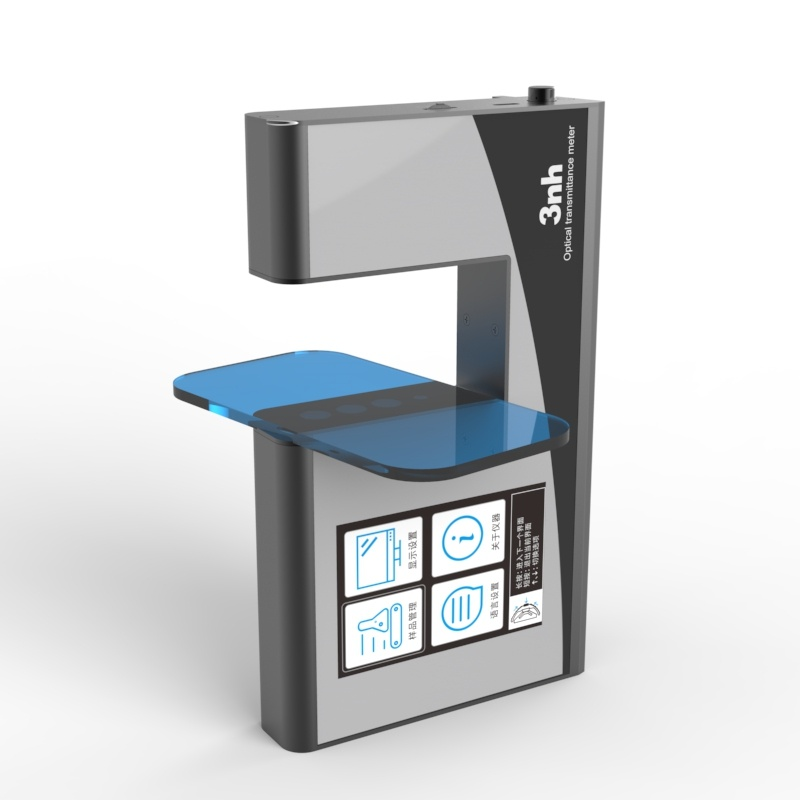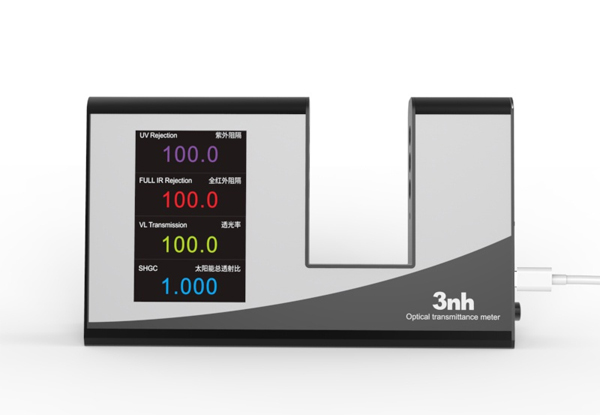Glass color testing currently relies primarily on measuring both transmittance and reflectance. Because glass’s reflectance and transmittance ratios differ from those of other materials, measurement can be more complex. In the past, these complex measurements were typically performed using imported colorimeters, as China produced colorimeters often exhibited technical and mass production challenges. However, over time, China produced colorimeters have become increasingly accurate, versatile, and stable, capable of measuring a wide range of objects. Furthermore, China produced colorimeters are steadily gaining market share in China, leveraging their strengths. The reasons for this gradual resurgence of China produced colorimeters, previously discussed in “Advantages and Development Trends of China Colorimeters,” will not be elaborated upon here.
Measurement of glass transmission color
Color testing of absorptive glass primarily relies on measuring transmitted color. National regulations clearly specify that visible light transmittance and color differences of transmitted color be measured and controlled. Furthermore, when using China colorimeter to measure color information, it’s important to consider user needs and the selection of illumination and observation angles for transmitted color measurement to ensure more accurate measurement data. While most standards specify vertical illumination and vertical reception for general color measurement, some products utilize vertical illumination and diffuse reception with an integrating sphere due to specific usage scenarios. The viewing angle of China colorimeter is typically determined at the time of production, so when purchasing, it’s crucial to carefully select the appropriate colorimeter for your product.
Measurement of glass reflection color
In addition to light-absorbing glass, the most commonly used decorative glass in buildings today is coated glass. Generally, coated glass is used outdoors, especially in large-scale curtain wall projects. When observing things outdoors, the reflected color is more important. Some glass manufacturers with higher color requirements will also measure the visible light reflectance and corresponding color parameters of the film surface. Generally, the measurement of glass reflected color by domestic colorimeter mainly uses diffuse lighting.
An Incredible Transmittance Measurement Instrument
In the wide range of such Measurement Instruments available today, the 3nh YT1020 transmittance meter is the most precise instrument for the measurement of transmittance of light, haze, and parallel transmittance of transparent or semi-transparent substances such as films, glass, plastics, and optical components. It is constructed based on international standards like ASTM D1003/1044 and ISO 13468/14782 in order to ensure constant and consistent test results on all application types.
It features a 7-inch capacitive touch screen that provides it with an instant and user-responsive response in real-time measurement display. Its diffused light optical design and open-style measuring port facilitate easy testing of flat and curved samples. The YT1020 finds widespread application in markets like automotive glass, touchscreen production, solar energy, and laboratory quality inspection.

The meter comes with multiple connectivity options like USB, RS-232, and HDMI, for easy data sharing and integration. It comes with functions like data comparison, QC report generation, and test modes. Compact and space-saving, the device offers fast, stable, and repeatable measurements with minimal maintenance. The best for laboratory and on-site usage, the YT1020 is a reliable choice for accurate optical testing and quality control.

